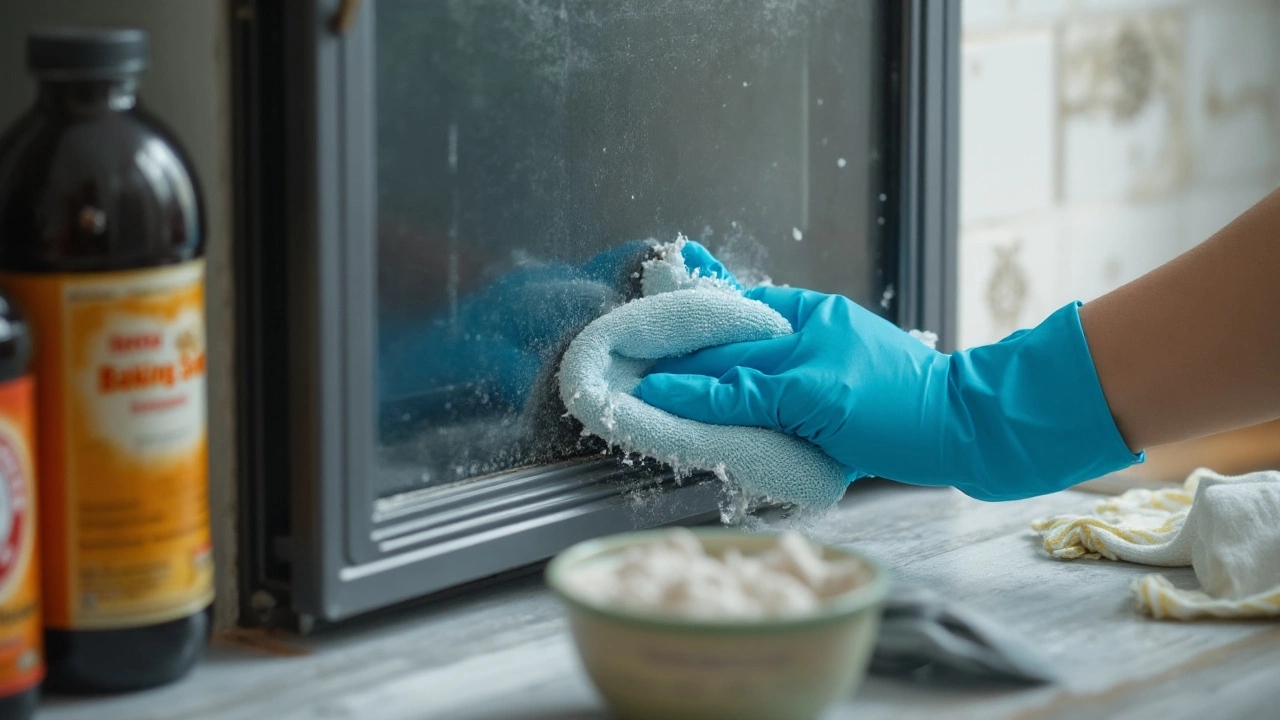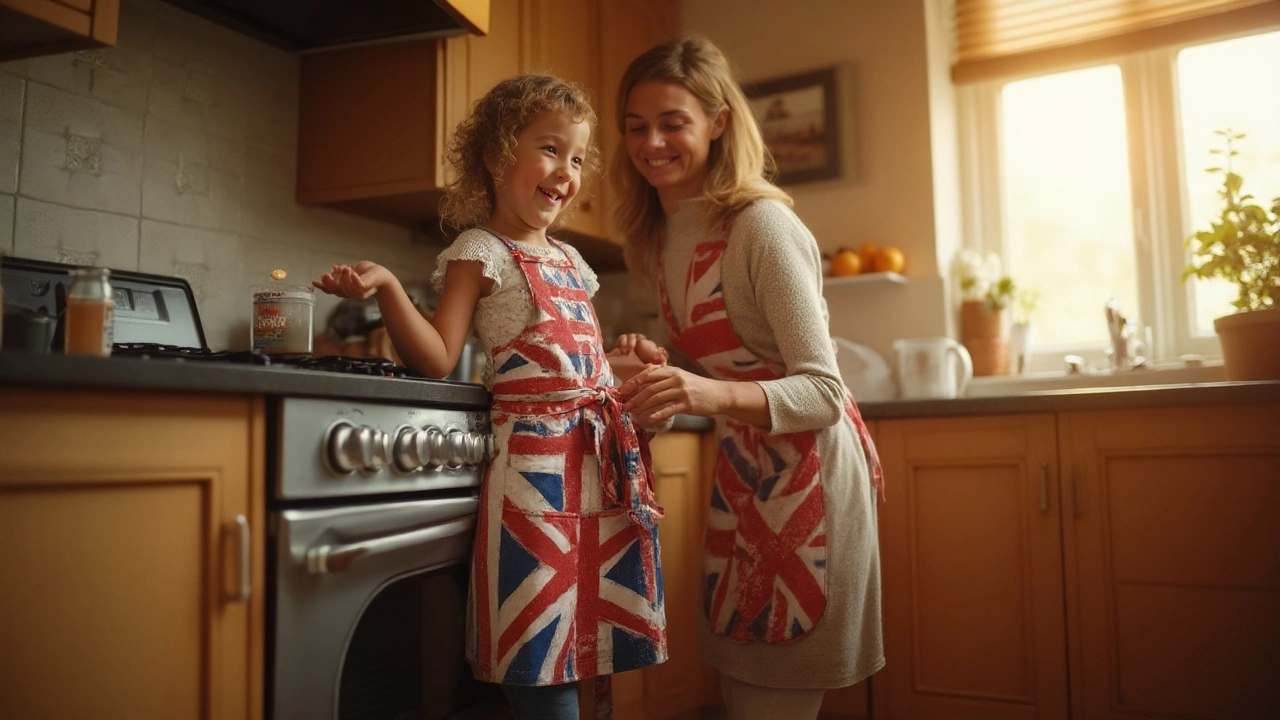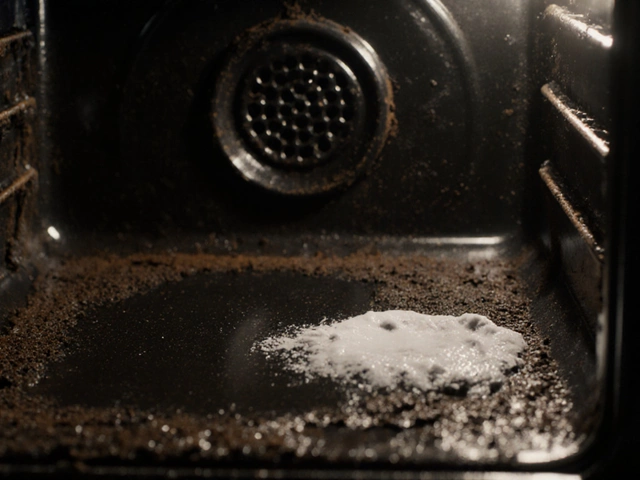Who else has stared in horror at that brown, streaky mess on their oven glass and thought, there’s no way to get this off? I have, more times than I’d like to admit—and so have so many people who’ve cooked one too many Sunday roasts. That glass starts out crystal clear and ends up a foggy, sticky billboard of last month’s lasagna splatters. Store cleaners promise miracles, but if you’ve got pets or just hate that sharp chemical tang lingering in your kitchen (looking at you, Juniper the cat, who loves to snooze on the stove), you end up hunting for safer methods. That’s where the magic duo—baking soda and vinegar—comes in. You may have heard someone swear by them, but do they really work on oven glass? Are there any risks most people overlook? Let’s pull open the oven door and find out what really goes on when these two team up.
Why Baking Soda and Vinegar Are a Go-To for Oven Glass
To understand why people keep reaching for the white box and that humble bottle, it helps to know a bit about what’s actually clinging to your oven glass. Most of the gunk—those cloudy streaks and brown blobs—is made of old oil, sugar, milk, or even cheese residue. It’s baked on at almost lava-like heat, so it doesn’t fade just because you wipe it. Every time you use a commercial oven spray, you’re not just cleaning—sometimes you’re rolling the dice on caustic fumes, rough residues, or even damaging the shiny finish on the glass. That’s why people hunt for something more natural but still strong enough to break up the worst grime.
Baking soda, or sodium bicarbonate if you want to get fancy, is mildly abrasive. It grabs onto grease and gives you just enough texture to scrub without scratching the glass. Vinegar, which is roughly 5% acetic acid, is famous for cutting through mineral deposits and killing a few germs along the way. When they combine, there’s a fizzy reaction—lots of bubbling, which is carbon dioxide gas. This bubbling lifts off the tougher debris so you don’t have to wring out your arm just to get one corner clean. By the way, this isn’t just wishful thinking: a University of Nebraska study actually tested household solutions, finding that baking soda paste in particular loosened stubborn food crusts about as well as many store-bought products, especially with some elbow grease.
But here’s the thing: the bubbling feels satisfying, but it doesn’t mean there’s some wild super-cleaner being produced when you mix them. The fizz helps with mechanical lifting, but the main action comes from baking soda’s gentle grit plus the softening and dissolving power of vinegar. Unlike harsh sprays, this blend is safe for most oven glass, doesn’t leave residue, and won’t blast your kitchen with scary fumes—pretty handy if your cat, dog, or even you have allergies.
Now, is this method always as fast as we hope? Not quite. Set-in stains can stubbornly refuse to budge without a few rounds—patience is part of the deal. But it does cut through the sticky, dark essence of burnt sugar, oils, and cheese from countless casseroles, and you won’t be left with a weird scent that lingers for days afterward. Plus, if you’re sharing that oven with pets or toddlers who press their noses against the glass, there’s peace of mind knowing you cleaned with something you could—hypothetically—sprinkle on your cereal (please don’t, though).

How to Use Baking Soda and Vinegar on Oven Glass the Right Way
Ready to tackle the grime? Hang tight. There’s an easy way and a way that usually gets better results. Here’s how I do it, especially when Juniper is circling the kitchen looking for snacks and I want to avoid any sketchy powders or sprays in the air.
- First, make sure the oven is completely cooled down. Touching a hot glass door with anything wet is an easy way to crack it, not to mention melt your knuckles.
- Grab a bowl and mix about half a cup of baking soda with enough water to create a thick paste. Think the consistency of toothpaste (not runny soup).
- With a soft sponge or a microfiber cloth, spread this paste all over the inside of your oven glass. Don’t be stingy—cover every greasy corner and those brown bits right up to the edges.
- Now, let the paste sit. I aim for at least 15-20 minutes. Set a timer if you forget things easily (I always get sidetracked).
- Here comes the fun part. Pour white vinegar into a spray bottle and lightly mist it over the baking soda paste. If it starts fizzing and bubbling, you’re doing it right.
- Give it another few minutes for the fizzy reaction to do its thing.
- Use a clean, damp sponge to start wiping up the paste. Don’t go at it with anything too rough—you don’t want to scratch the glass. You’ll probably need to rinse the sponge a few times as you pick up gooey, now-loosened grime.
- If any stubborn bits cling for dear life, gently use a plastic spatula to nudge them off. Never use a razor on glass that has special coatings—you could make things worse.
- Repeat the process if needed for the most stubborn spots. Some baked-on grease just doesn’t play fair the first time.
- Finish by wiping the whole glass with a clean, wet microfiber cloth to catch any last traces of baking soda or spots.
Not everyone knows you can also remove the oven door and lay it flat to make life easier. Most modern ovens have clips or notches that let the door pop off without tools—you’ll see them near the hinges. This way, gravity’s not fighting you, and you won’t get drips inside the vent areas.
Don’t mix baking soda and vinegar in the bowl—instead, keep them separate for the steps above. Mixing them up front means you just get salty water, and that loses the scrubbing and fizzing action you want. Use them one after the other instead of at the same time—trust me, you’ll see a bigger effect.
If you’re battling a really old, streaky stain (say, the result of a decade-old pie disaster), you might need to let the paste sit for up to an hour. Just don’t let it dry out; a few spritzes of water or vinegar halfway through will keep it working.
One trick: If the glass is super cloudy but clean from grease, try a final polish with a mixture of half white vinegar and half distilled water. Dry using a lint-free cloth. That gets rid of streaks and brings out a natural shine.

Common Myths, Risks, and Extra Tips for Shiny Oven Doors
There’s plenty of kitchen mythology when it comes to cleaning glass. One big myth: If a little baking soda is good, more is better. Piling on extra and scrubbing hard can actually scratch delicate glass, especially on older ovens with special coatings. Always go easy and stick with a soft cloth or sponge. If you’re not sure, test a small hidden spot first—better safe than regretting it every time the oven light flicks on.
Some people worry that vinegar could damage the shiny coating on oven glass. In practice, as long as you don’t let vinegar soak for hours and you avoid combining it with unknown chemicals, you’re in the clear. Still—if your oven’s manual says "no vinegar," follow it. Manufacturers sometimes use proprietary coatings that play by different rules.
Microwave ovens are a separate story. Their inside glass is usually more sensitive, and some have digital displays right next to the glass, so don’t use this method there.
A bonus tip? After every big roast or baking session, while the glass is still warm (not hot!), give it a quick wipe with a damp microfiber cloth. This stops stains before they get a chance to fossilize. For anyone with pets or toddlers in the house, it beats having to wage war with caked-on oil every few months.
If you ever run out of baking soda, plain old table salt mixed with a bit of water works, too. It’s just a bit scratchier, so be gentle.
And if you’re hoping to prevent future mess? Try cooking your cheesier or juicier dishes inside a roasting bag or extra-large casserole with a lid. Less splatter means less work. Some people go as far as lining the oven with a fitted sheet of heavy-duty aluminum foil on the bottom rack (never on the floor of the oven!) to catch drips, which saves you from tough future scrubbing. Just check your oven manual first—some models warn against this.
Small everyday things make a difference, too. Each time you open the oven, check for any fresh splats or drips. A quick wipe with a wet cloth right away prevents stains from setting. It’s what I do now, after learning the hard way that one burnt cheese spill means three rounds of scrubbing if you ignore it too long.
If you’ve got a self-cleaning oven, don’t start the self-clean cycle with thick build-ups still stuck on the glass. That’ll bake the debris into a permanent mark. Always scrape and wipe first, then run the cycle.
And honestly, the satisfaction of seeing that glass go from brown and foggy to clear and shining with just pantry staples is reason enough to try it out. Next time you find yourself squinting through greasy streaks to check if your pizza crust is done, you’ll know exactly what to do. No strange smells. No residue. Just a fresh, glimmering panel even a picky pet like Juniper could admire.





